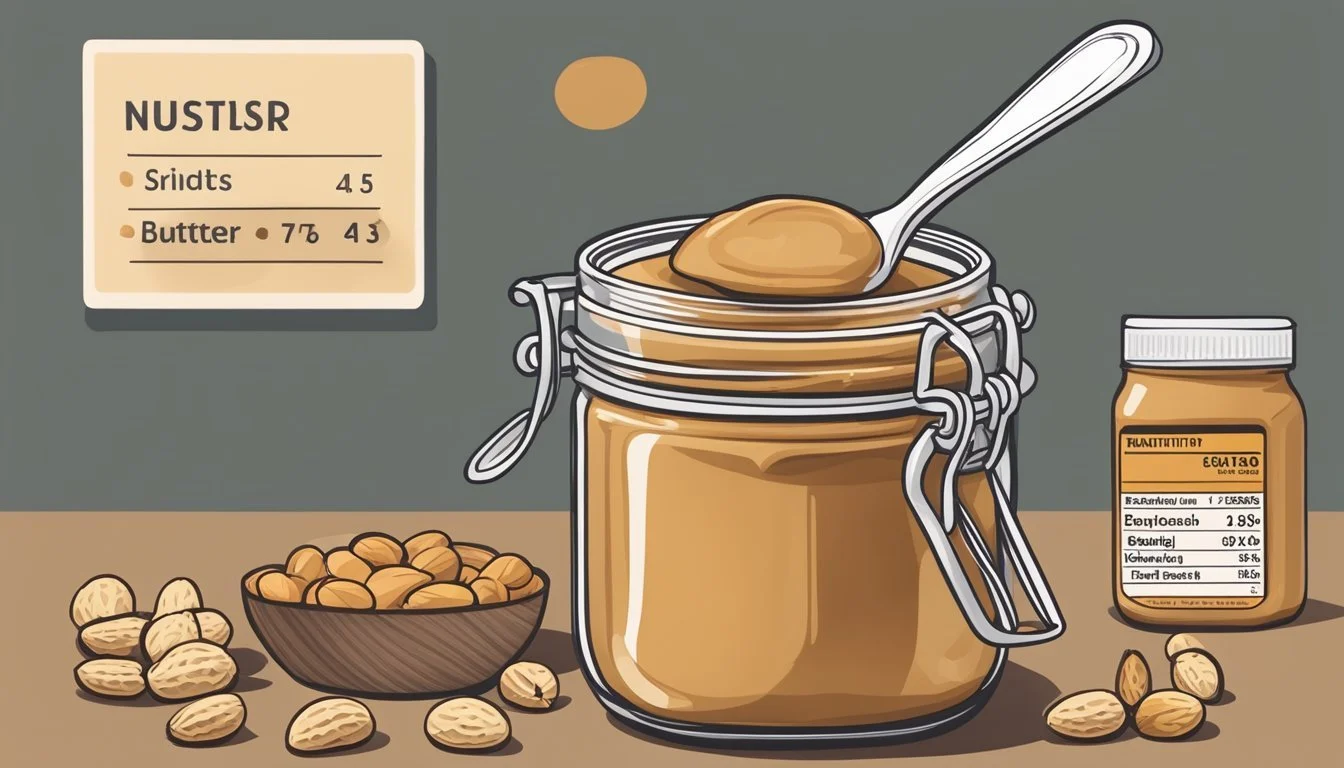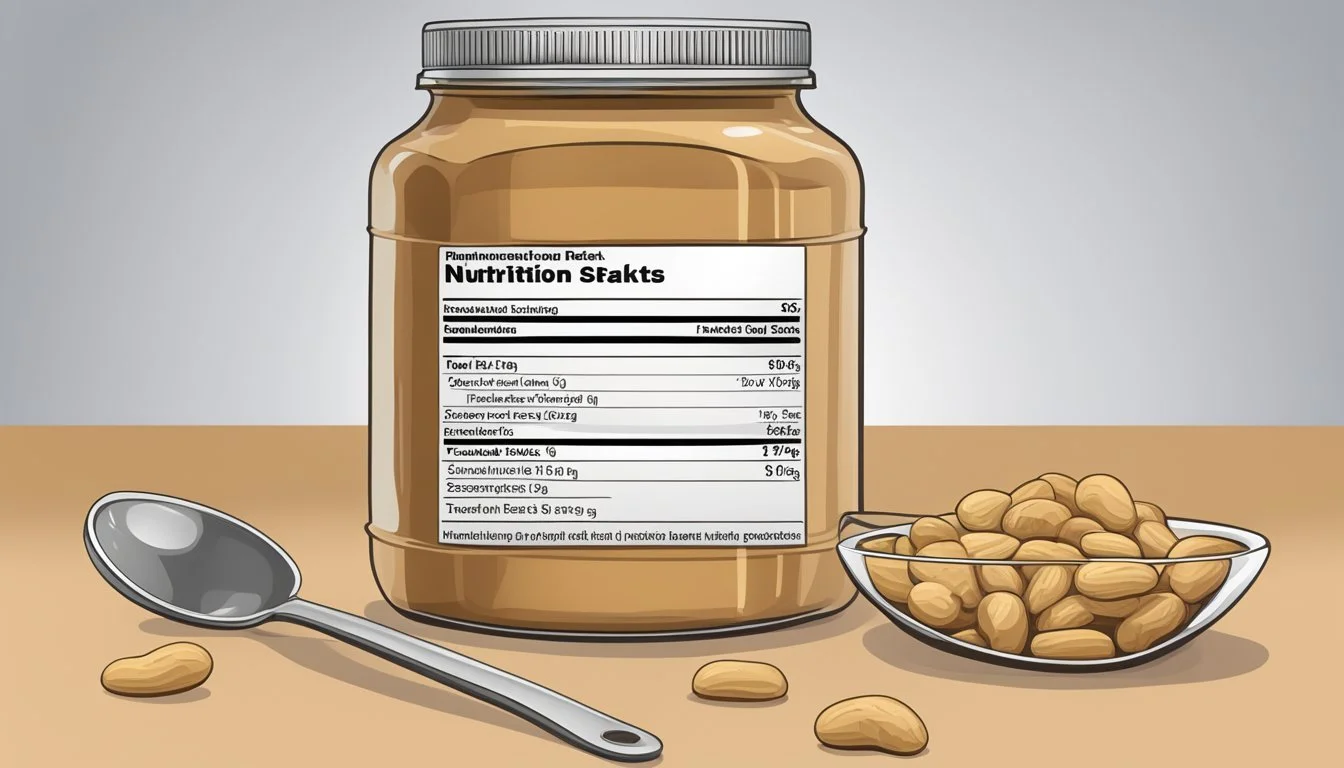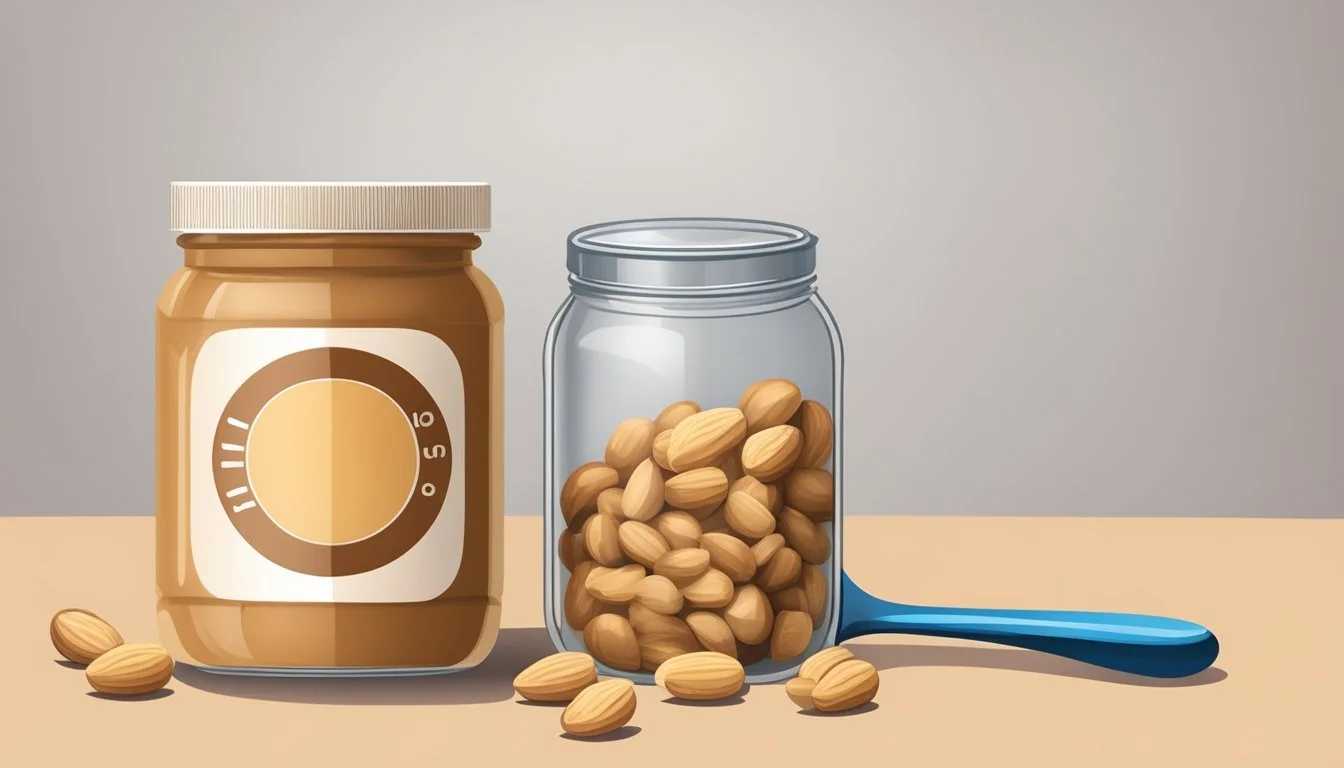How Much Peanut Butter Is a Healthy Serving?
Unveiling Portion Guidelines
Peanut butter is a staple in many households, known for its creamy texture and rich flavor. It offers an array of nutritional benefits, including healthy fats, protein, vitamins, and minerals. A typical serving size is two tablespoons, providing a sizable amount of protein that's essential for muscle repair and enzyme function. However, while it is a nutrient-dense food, it also contains calories and fat, which calls for mindful consumption.
Determining a healthy serving of peanut butter hinges on individual dietary needs and overall eating patterns. Consuming it in moderation is key, as it can complement a balanced diet when included properly. The recommended two-tablespoon serving contains about 190 calories and 16 grams of fat, making it important to factor into one's daily intake to maintain a balanced diet.
Peanut butter's health benefits are maximized when it is part of a varied diet that aligns with nutritional guidelines. The presence of monounsaturated fats in peanut butter is associated with heart health advantages. Consumers should select varieties that are low in added sugars and sodium to make the most of peanut butter's nutritional profile. Thus, while peanut butter can be a nourishing option, understanding and adhering to the right portion sizes is essential for reaping its benefits.
Nutritional Profile of Peanut Butter
Peanut butter is appreciated not only for its rich taste but also for its dense nutritional profile, which includes essential macronutrients, vitamins, and minerals. Its composition makes it a substantial food choice within a balanced diet.
Macronutrients and Calories
A typical serving of 2 tablespoons (32 grams) of smooth peanut butter contains around 190 calories. The same serving size provides a substantial amount of fat, with 16 grams, and a moderate amount of protein, about 7 grams. It also offers 8 grams of carbohydrates and 2 grams of fiber.
Calories: 190
Total Fat: 16 g
Carbohydrates: 8 g
Fiber: 2 g
Protein: 7 g
Vitamins and Minerals
Peanut butter is a good source of various vitamins and minerals that are essential for overall health. It contains magnesium, which supports muscle and nerve function, phosphorus for healthy bones, and zinc for immune system support. Additionally, it includes niacin (vitamin B3), which is crucial for energy metabolism, vitamin E, a potent antioxidant, and folate, which is necessary for DNA synthesis. Although peanut butter is not typically a significant source of iron or calcium, it does contribute to the intake of these minerals.
Magnesium: Supports muscle and nerve functions
Phosphorus: Important for healthy bones
Zinc: Boosts the immune system
Niacin (Vitamin B3): Crucial for energy metabolism
Vitamin E: An antioxidant that helps protect cells
Folate: Necessary for DNA synthesis
Healthy Fats and Protein
The fat content in peanut butter includes both saturated fats and unsaturated fats—monounsaturated and polyunsaturated fats. The unsaturated fats are known to be heart-healthy, and they make up the majority of the fat content in peanut butter. Peanut butter's protein content makes it a filling snack that can help with muscle repair and building.
Saturated Fat: 2.5-3 g (Per 2 tablespoons)
Monounsaturated Fat: Predominant form of fat present
Polyunsaturated Fat: Included in smaller amounts
Protein: Contributes to satiety and muscle maintenance
Each 2-tablespoon serving significantly contributes to the intake of nourishing fats and protein, which are essential to a healthy diet.
Health Benefits and Risks
Peanut butter, when consumed in moderation, can offer a myriad of health benefits, yet overconsumption can pose certain risks. Understanding the balance between its nutritional components and their impact on various health aspects is crucial.
Heart Health and Disease Prevention
Peanut butter is rich in unsaturated fats, which are known to be heart-healthy. Unsaturated fats can help lower bad LDL cholesterol levels, potentially reducing the risk of heart disease. Additionally, its fiber content supports healthy blood pressure, contributing to overall cardiovascular health. However, it is important to limit intake, as excessive consumption can lead to an imbalance in calorie intake and potential weight gain, which is a risk factor for heart disease.
Diabetes Management
With its low glycemic index, peanut butter can have a positive effect on blood sugar control, making it a suitable option for those managing diabetes. The protein and fiber in peanut butter help with insulin resistance and provide a sense of satiety, which aids in avoiding blood sugar spikes. People with diabetes should still consume it cautiously, as it is calorie-dense and overeating may lead to weight gain, exacerbating diabetes management.
Weight Loss and Appetite Control
Peanut butter can be an effective component of a weight management diet due to its high protein content, which aids in satiety and helps control appetite. Protein promotes a feeling of fullness, potentially reducing overall calorie intake. However, portion control is essential, as peanut butter is also high in calories. A healthy serving--such as two tablespoons--can fit into a weight loss diet. Individuals should be mindful of their consumption to avoid potential weight gain, which could lead to obesity.
Understanding Peanut Allergies
When discussing peanut butter consumption, it is critical to be aware of peanut allergies, as they can pose significant health risks. This section provides insights into the symptoms associated with peanut allergies and dietary considerations to manage this condition.
Allergy Symptoms and Risks
Individuals with peanut allergies may experience a range of symptoms that can occur within minutes or hours after exposure to peanuts. Common symptoms include:
Skin reactions: such as hives, redness, or swelling
Digestive problems: including stomach cramps, diarrhea, or vomiting
Respiratory issues: characterized by wheezing, nasal congestion, or a runny nose
In severe cases, exposure to peanuts can trigger anaphylaxis, a potentially life-threatening reaction that requires immediate medical attention. Symptoms of anaphylaxis may include difficulty breathing, a sharp drop in blood pressure, and loss of consciousness.
Dietary Considerations for Peanut Allergies
Managing a peanut allergy primarily involves the avoidance of peanuts and products containing peanuts. It's important to:
Read food labels: Peanuts can be found in unsuspected products like baked goods, salad dressings, and candies.
Communicate with restaurants: When dining out, individuals should inform the staff about their peanut allergy to prevent cross-contamination.
Consider alternatives: Nutritionally equivalent substitutes for peanut butter include almond butter, sunflower seed butter, or soy nut butter, provided the individual is not allergic to these nuts and seeds.
The presence of peanut allergies in individuals necessitates a vigilant approach to diet and awareness of potential emergency situations.
Peanut Butter Varieties and Labels
When selecting peanut butter, consumers face a variety of choices, each with different ingredients and nutritional content. Understanding these differences is key to making a healthy selection.
Natural vs. Processed Peanut Butter
Natural peanut butter typically includes minimal ingredients, often limited to just peanuts and sometimes a small amount of salt. The labels of natural peanut butter brands usually list organic dry roasted peanuts as the primary ingredient, with possible additions such as Atlantic sea salt.
On the other hand, processed peanut butter may contain additives like sugar, oils (such as grapeseed or palm oil), and stabilizers to increase shelf life and enhance flavor. Brands like Jif Natural Crunchy Peanut Butter include these additives along with molasses. Processed options often have a smoother texture and are less likely to separate but may contain more calories and saturated fats.
Reading Nutritional Labels and Ingredients
Nutrition labels provide crucial information about calories, fat content, sodium, and sugar. For instance, a common serving size of 2 tablespoons of peanut butter will typically offer around 180-190 calories, approximately 15-16 grams of fat, and a protein count of around 6-7 grams. It's essential to examine the fiber content as well, which is an indicator of its nutritional value.
Regarding ingredients, the fewer listed, the closer the peanut butter is to its natural state. For a healthier choice, one should look for peanut butter with no or less added sugar and salt. Brands like Noomi Peanut Butter and Spread The Love Naked Organic Peanut Butter are examples that exhibit limited and organic ingredients.
Based on the provided snippets, added sugars and fats from various oils are more prominent in certain brands, which impacts the overall healthiness of the product. Consumers must be diligent about reading labels to choose peanut butter that aligns with their dietary preferences and health goals.
Incorporating Peanut Butter into Your Diet
When considering adding peanut butter to one's diet, it's important to think about both creative and nutritious ways to include it, as well as the significance of portion control to maintain a healthy balance.
Recipes and Serving Ideas
Peanut butter can be a versatile component in various dishes. It can be smoothly integrated into smoothies for a rich, nutty flavor and a protein boost. One can swirl it into yogurt to enhance the taste and nutritional value with its healthy fats and proteins. For those seeking alternatives, almond butter or walnut butter can offer comparable benefits with a different taste profile.
Smoothies: Add 2 tablespoons to your favorite blend for added creaminess and protein.
Yogurt: Mix 2 tablespoons into a cup of plain Greek yogurt for a filling snack.
One innovative way to enjoy peanut butter is by making a batch of energy balls: combine peanut butter with ingredients like oats and honey, then roll into bite-sized balls.
Portion Sizes and Moderation
Incorporating peanut butter into a balanced diet necessitates mindful consideration of serving sizes. A healthy serving of peanut butter is typically two tablespoons, which averages around 190 calories. This amount contributes beneficial nutrients without excessive caloric intake.
Recommended Serving: 2 tablespoons per serving to balance caloric intake with nutrition.
Integrating peanut butter should be done with moderation to avoid excessive calorie consumption that could hinder weight management goals. Using tools like measuring spoons can aid in portion control, ensuring one enjoys the health advantages of peanut butter without overindulgence.
Additional Considerations
When considering the healthy serving size of peanut butter, it is also important to take into account various factors that may influence its consumption and impact. Shelf life, environmental and ethical considerations, and dietary adaptations are pivotal in ensuring the peanut butter you enjoy is both healthy and aligns with your individual needs and values.
Shelf Life and Storage
Peanut butter typically has a shelf life of about 9-12 months unopened and can generally last for up to 3 months once opened when stored properly at room temperature. However, natural peanut butter, which often has visible separation of peanut oil, can have a shorter shelf life and may require stirring before use. For the longest shelf life, one should ensure the lid is tightly sealed to prevent the peanut butter from drying out or becoming rancid. The USDA and FDA recommend storing peanut butter in a cool, dry place away from direct sunlight.
Environmental and Ethical Considerations
The production of peanut butter involves various environmental and ethical considerations. One should be aware of the sourcing of peanuts and whether they're grown in a manner that minimizes the impact on the environment. The use of pesticides and the carbon footprint of transportation are additional factors. Consumers might also consider looking for brands that engage in ethical practices such as fair labor conditions and sustainable farming. Considering these aspects can inform more conscientious purchasing decisions, especially when options are available both online and in stores.
Dietary Adaptations
For individuals with specific dietary needs, peanut butter is generally a gluten-free and vegan food, which makes it a versatile option for many. However, those with allergies to peanuts should obviously avoid peanut butter, and there are peanut-free alternatives available. When looking for peanut butter, checking the label for certification can reassure consumers about the quality and dietary standards of the product—this includes confirming non-GMO status or the absence of added sugars and hydrogenated oils. Consumers can also verify if the peanut butter is certified by organizations that align with their dietary restrictions or preferences.
Conclusion
Peanut butter is recognized for its nutritious value, offering a good balance of protein, healthy fats, and essential vitamins and minerals. It can be a healthful addition to a balanced diet when consumed in proper serving sizes.
The right serving of peanut butter is typically two tablespoons, providing roughly 7 grams of protein, 16 grams of fat, and 8 grams of carbohydrates. This portion fits well into a diet that aims for a mix of macronutrients.
Consuming peanut butter offers various health benefits, such as supporting heart health and providing a source of compounds like folate, potassium, vitamin E, and B vitamins. It should be noted, however, that peanut butter also contains calories that can add up quickly, so moderation is key to harness its benefits without overindulgence.
It is also wise to opt for varieties lower in added sugars and unhealthy fats. Natural or organic peanut butters with no added ingredients often provide the most health benefits.
In essence, peanut butter can contribute positively to one's health when integrated sensibly within a diet. Portion control ensures calories are kept in check, while the right product choice maximizes the nutritional gain.









